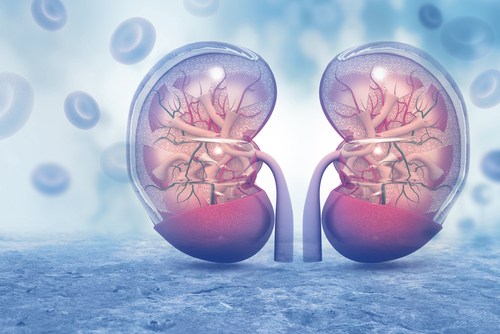Renal Function Normal in Systemic Sclerosis Patients Despite High Arterial Stiffness, Study Suggests
Written by |

In patients with systemic sclerosis, renal function is generally well-preserved, despite increased stiffness of the arteries that supply the kidneys, a study shows.
The study, “Prognostic Factors of Renal Involvement in Systemic Sclerosis,” was published in the journal Kidney & Blood Pressure Research.
Systemic sclerosis (SSc) is an autoimmune disease characterized by fibrosis of the skin and internal organs. In particular, renal (kidney) involvement is present in up to 80 percent of SSc patients.
Renal involvement in SSc is often associated with high intrarenal arterial stiffness, which refers to the hardening of arteries that supply blood to the kidneys. High intrarenal arterial stiffness can lead to high blood pressure and, consequently, impaired functioning of the kidneys.
Additionally, renal involvement in SSc is also linked to reduced glomerular filtration rate (an indication of reduced kidney function), scleroderma renal crisis (SRC), and ANCA-associated vasculitis (AAV). SRC is a condition characterized by high blood pressure and acute renal failure. AAV is an inflammatory disease that develops due to the destruction of small blood vessels, often in the kidneys.
Because renal involvement in SSc patients can be varied, researchers set out to determine the different types and evolution of renal involvement in this patient population over five years.
In total, 121 SSc patients, 62 with diffuse cutaneous SSc and 59 with limited SSc were enrolled in the study. All patients were screened every year to evaluate renal function.
Results showed that over a mean follow-up period of 4.1 years, only eight patients developed renal disease: Six patients developed SRC, four of whom required dialysis; one patient developed AAV-related glomerulonephritis — acute inflammation of the kidney; and the last one developed acute tubular necrosis — death of epithelial cells that form the renal tubules of the kidneys.
The remaining 113 patients had preserved renal function.
Interestingly, despite no change in renal function, intrarenal arterial stiffness in SSc patients was higher than in the general population. In fact, imaging using color Doppler ultrasound showed that intrarenal arterial stiffness increased with worsening SSc — as determined by looking at damage to renal blood vessels and the presence of digital ulcers — a classic outward sign of scleroderma.
This shows that, in SSc patients, renal function is normal despite the presence of increased intrarenal arterial stiffness.
Therefore, the authors suggested that, “all patients with SSc should be carefully evaluated for symptomatic and asymptomatic renal involvement. Asymptomatic renal vasculopathy is frequently present but it does not seem to be associated with poorer outcome.”
They also emphasized that SRC remains a severe manifestation of SSc, and recommended that a renal biopsy be done to differentiate SRC from other forms of glomerulonephritis because the treatment regimens for each differ.





